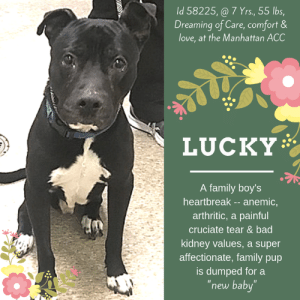Hyperkeratosis generally means excessive keratinization of the skin: The term digital refers to the technical term for the dog’s five paw pads, the digital bales.
This hereditary disease (hyperkeratosis in dogs ) is not for nothing colloquially called corny feet or grainy feet. In the affected dogs, the skin of all four paw pads is not soft and elastic, but dry, thick and often pervaded by cracks and nicks, similar to the dried and torn earth. To better clarify the clinical picture here are two photos of an affected bitch.
But that is not the only indication that the dog suffers from this disease. In general, there are three common characteristics that ensure a diagnosis of digital hyperkeratosis (DH).

Coat structure:
The first indication of a possible disease is the coat of the newly born elf in the first two to three hours of her life. In front of the tail root on the spine one sees wavy hair, similar to a Persianerfells. The feature disappears very soon. However, even puppies were born with this crustacean, which was later absolutely healthy and did not suffer from DH. Nevertheless, one should keep an eye on these puppies and check their bales again and again. When the litter is taken for eight or nine weeks, the affected puppies are completely unremarkable. If a pup has DH, it can be noticed in the course of growing up from the fourth month onwards that the coat is not smooth, but has a typical crinkly structure, especially pronounced on the face. This is not to be confused with the particularly dense, but only wavy fur that dog can have. In addition, the probes on the muzzle of the sick dogs until the sixth month of life are quite clearly bent forward to the nose and can later turn corkscrew. Some dogs also suffer from increased itching due to DH and have to scratch more than healthy dogs.
Bales:
A further indication of disease falls in the young dog on an increasing brittleness of the bales. As mentioned above, the skin of the paw pads is dry and chapped and, instead of being resilient, round and elastic, the bale looks rather flat. In addition, growths can occur at the edges of the bales, which are called horn cone because of their shape. These growths clearly indicate DH. They do not develop with every sick dog.
Claws:
In addition to the cracked bales, the claws of diseased dogs grow excessively fast. They cannot be walked on properly by the dog and are therefore often bent sideways. They do not end in a tip, as in the healthy dog, but dull, as with the claw pliers straight cut. Some owner-affected dogs also report great brittleness of the claws that they easily splinter and fray.
Only when all three symptoms occur together ruffled fur, brittle bales with or without growths and excessive claw growth is the dog ill with DH.
Treatment:
The digital hyperkeratosis cannot be cured only treated. For the affected dogs, careful care of the bales is necessary to keep the skin supple and soft. Special attention must be paid to the claws. They need to be checked regularly and possibly cut. In addition to the claw pliers you can smooth the frayed claw edges with a normal nail file. Also the thumb claw must not be forgotten, because otherwise the dogs can easily get stuck and injure themselves.
